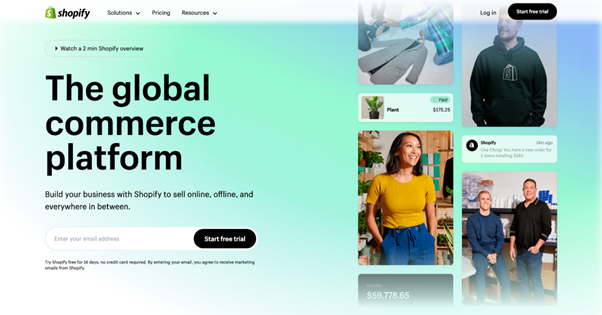Without demand, it doesn’t matter if your business idea sounds amazing. If nobody wants your product, you’ll have a hard time making any money! As the old saying goes, it’s much easier to fill existing demand than trying to create it.
Fortunately, a number of online tools allow you to measure demand for a product or market.
Facebook Audience Insights
Facebook is the largest social media network in the world. It has over2.23 billion monthly active users, with the average US adult spending 38 minutes per day on the site. Facebook Audience Insights is a great dropshipping product research tool that can help you find niche markets and trends.

Facebook Audience Insights is a free tool that helps you learn more about an audience. It aggregates information about Facebook users and helps determine the size of a potential dropshipping niche and the interests relevant to that niche.
You can use Facebook Audience Insights to find information like:
Demographics: age, gender, lifestyle, education, job role, relationship status, etc.
Page likes: categories and topics that interest an audience
Location: where people live and the languages they speak
Activity: Facebook ads clicked, comments made, promotions redeemed, devices use, and more
For example, if you want to explore a dropshipping niche like fitness and wellness, you can type in any keyword and Facebook will show you how many monthly active people are interested in this niche worldwide. You also can see how many people are interested in a topic, their likes, and their location.
Let’s look at meditation, for example. You can see below that between 200M and 250M people on Facebook are interested in mediation globally. This is a good indicator that meditation could be a profitable dropshipping niche.

You can also look at sub-niches, like yoga pants, buddhist meditation, meditation music, and any related interests to explore different dropshipping product ideas. The estimated size of your audience will change depending on the interests you include.

You can refine this audience by location. For instance, if you want to target people in the US, you can search by just that country, then see this more focused audience’s top interests related to meditation in the Page Likes tab.

This information can help you see what topics people are interested in so you can better test different ad groups later on and get better return on your ad spend.
Google Keyword Planner
The best way to measure demand for an item online is to see how many people are looking for it using a search engine like Google. Fortunately, Google makes this search volume publicly available via its Keyword Planner tool. Simply type in a word or phrase and the tool tells you how many people are searching for it every month.

There are entire training modules dedicated to using Keyword Planner, and we’re not able to cover the topic exhaustively in this resource. But keep the following three metrics in mind and you’ll be well on your way to getting the most out of this valuable tool:
Match type. Keyword Planner lets you select broad, phrase, or exact-match types when it reports search volumes. Unless you have a good reason to do otherwise, you should use the exact-match option. This will give you a much more accurate picture of the applicable search volume for the keyword.
Search location. Make sure you look at the difference between local search volume (in your country or a user-defined region) and global search volumes. If you’ll be selling primarily in the US, you should focus on the local search volumes and ignore the global results.
Long-tail variations. It’s easy to fixate on the broad one- or two-word terms that get massive amounts of search volume. In reality, it’s the longer, more specific, and lower volume search queries that will make up most of your traffic from the search engines. These more detailed search terms are commonly referred to as “long tail” searches.
Keep this in mind when you’re looking at potential markets and niches to enter. If a search term has many variations that are actively searched for, that’s a good sign that the market is fairly deep with lots of variety and interest. But if search queries and related volume drop off precipitously after the first few high-level words, there’s probably less related long-tail traffic.
Google Trends
The keyword tool is great for raw search figures, but for more detailed insights, a lot of people use Google Trends.
This tool offers you information that Google’s Keyword Planner just doesn’t provide, including:
Search interest over time. Ideally, you want the niche you’re entering to be growing, and Trends can let you know if this is the case. For any given search query, you can see the growth or decline in search volume over time.

Top and rising terms. You’ll also be able to get a snapshot of the most popular related searches and of which queries have been growing in popularity the fastest. Focusing on these terms can be helpful when planning your marketing and SEO efforts.

Geographical concentration. Another useful feature is the ability to see where people are searching for a term geographically. This can help you identify where your customer base for a specific niche is most heavily concentrated. For example, if you’re selling canoes, you’ll want to determine where the majority of your customers will come from.

Seasonality. Understanding the seasonality of a market—that is, if the demand for a product changes dramatically at different points in the year—is crucial. Because the keyword tool provides data on a monthly basis, you can draw some misleading conclusions if you measure search volumes during the wrong time of year.
We can bet that “canoes” are a very seasonal search term with demand peaking in the summer months. If you measured demand in the summer expecting that it would be constant throughout the year, you’d grossly overestimate the size of demand.
For any product you’re seriously considering, you’ll want to spend time understanding the intricacies of the niche’s search volume. Using the Google Trends tool to understand search volumes, geographic concentration, high-level search trends, and seasonality will offer insights that can help you avoid costly mistakes and optimize your marketing efforts.




